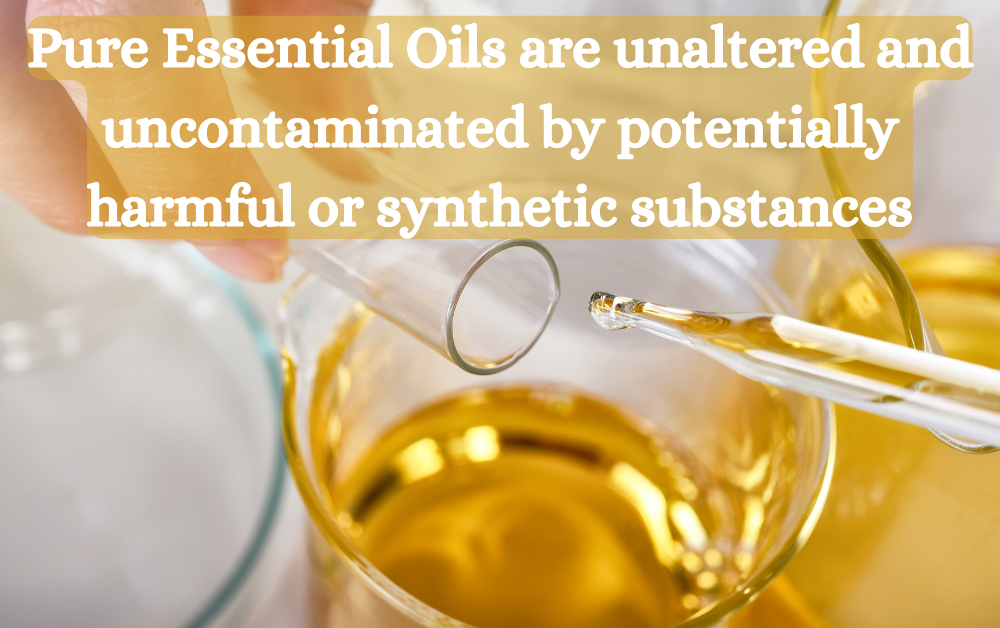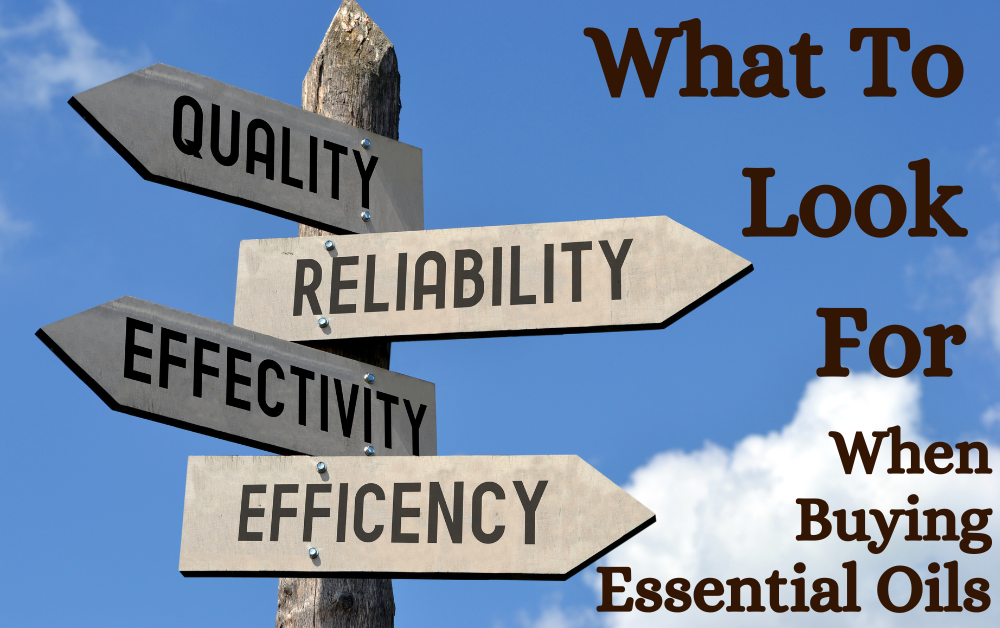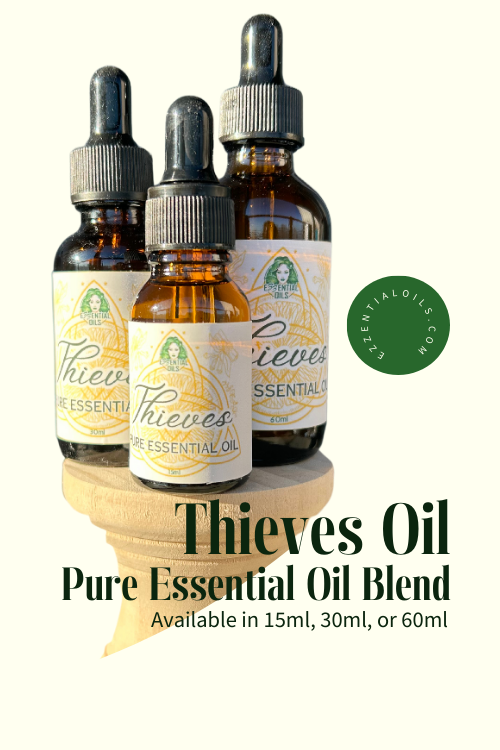The Truth About Essential Oils:
Fact vs Fiction

What Is Purity?
Simply put, purity is closely tied to the composition of an essential oil. It can be defined as the state of being fully and completely composed of the plant source or plant species that is printed in Latin on the label of the bottle. In other words, the essential oil has not been adulterated or contaminated by potentially toxic or synthetic substances.
Essential oils, derived from plant parts through methods like steam distillation or expression, are concentrated botanical extracts. Despite the alluring claims seen in marketing campaigns, such as therapeutic grade, 100% authentic, 100% pure, 100% natural, clinical grade pure and complete, and similar labels, consumers often struggle to grasp the true meaning of essential oil purity and how it relates to overall quality.

In essence, purity is intricately linked to an essential oil's composition. There is no one way to define or recognize the purity of an essential oil, but we define it as the state in which the oil is entirely and genuinely made up of the specific plant source or plant species indicated on the bottle label. In simpler terms, the essential oil remains unaltered and uncontaminated by potentially harmful or synthetic substances.
What is Adulteration?
The consequences of using impure or adulterated essential oils can be immense. On one level, these oils may not offer the same level of therapeutic or cosmetic benefits as an unadulterated oil, and can further compromise the integrity and performance of products if they are added to formulations. On another level, they may be toxic or otherwise unsafe to use, causing adverse reactions or sensitivities.
No matter the industry, all essential oil stakeholders are driven by a need to search for the purest of oils at the fairest of prices. Unfortunately, some essential oil suppliers and companies have come to rely on unscrupulous practices to satisfy this need in the market, selling adulterated or contaminated products disguised as pure and authentic oils.

Adulteration is the practice of modifying the composition of essential oils using dishonest techniques, typically so that they may be sold at cheaper prices. There are many ways an oil can be adulterated:
Diluting With Other Essential Oils
To boost profits, a more inexpensive essential oil may be mixed in, while ensuring the fragrance remains more or less consistent. Pricy Neroli oil, for example, can be adulterated with the far cheaper Sweet Orange essential oil, and likewise, expensive Melissa oil is sometimes compromised by diluting with Citronella oil which exudes similar lemon undertones.
Fraudulently Labelling
The worst type of adulteration, in our opinion is fraudulent labelling. Some suppliers disguise and label cheaper essential oils (or essential oil blends) as more expensive ones. The high production cost tempts dishonest business owners to blend down, completely replace expensive or rare oils with imitations. This is not the same as the honest practice of making and selling blends. Sometimes, the only way for a consumer to experience a rare or expensive oil is in a blend, but all blends should be labelled as such, and not try to pass as a pure essential oil.
Adding Synthetic Constituents
To expedite the process of passing certain quality controls or to augment the fragrance, manufacturers may opt to incorporate compatible synthetic compounds into essential oils. In certain instances, essential oils themselves have been found to be adulterated with synthetic versions of their primary constituents.
This practice of adulteration, whether through the addition of synthetic compounds or the substitution of genuine constituents with synthetic counterparts, can pose significant challenges for consumers seeking pure and unadulterated essential oils. It not only affects the integrity of the product but also raises concerns about the potential introduction of substances that may not align with the desired therapeutic or aromatic properties of the oil. Therefore, consumers must exercise caution and choose reputable sources to ensure the authenticity and quality of the essential oils they use.
Adding Natural Constituents
In the quest to enhance the sensory appeal of a naturally derived essential oil, manufacturers sometimes turn to the practice of isolating natural constituents from botanical sources and blending them into the final product. This approach is commonly employed to improve the aroma or overall aesthetics of the oil. However, it's essential to distinguish this practice from the deliberate adulteration of essential oils.
The critical distinction lies in transparency and disclosure. When natural constituents are added to an essential oil to create what's known as a "Natural Blend," it is generally considered an accepted industry practice, provided that the blend is properly labeled and its ingredients are disclosed to the consumer. In such cases, these altered blends can offer unique aromatic profiles while still being recognized as a valid product category.
Mixing Non-Organic Oils With Organic Essential Oils
Instances have arisen where specific companies have faced suspicion regarding the inclusion of non-organic oils into certified organic ones, as a means to further increase their profitability.
Diluting With Carrier Oils
One of the relatively straightforward methods of adulteration entails the introduction of vegetable or mineral oils to increase the overall volume of an essential oil. This addition can occasionally result in a milder fragrance for the essential oil. Intriguingly, some cases have showcased such a subtle blending that even experienced evaluators struggle to discern it through aroma alone. While there have been claims that this form of adulteration can be detected using blotting paper, it's worth noting that in recent years, these uncomplicated dilution techniques appear to be dwindling in practice.
How Can I Know If My Essential Oils Are Pure?

The most expensive, but most accurate way of testing the purity of an essential oil consists of chemically evaluating the composition of an essential oil. Included in this is the sophisticated GC-MS (Gas Chromatography–Mass Spectrometry) Test that has now become synonymous with essential oil purity testing.
GC-MS unites the techniques of Gas Chromatography (GC) and Mass Spectrometry (MS) to enable the identification of the different chemical components comprising an essential oil. The purity of the essential oil in question can be determined by splitting the oil into its individual constituent parts depending on its molecular structure. The evaluator compares the results with a spectrum that represents a known, pure sample This allows the evaluator to conclude which components, along with their percentages, were present in the sample.
Worthy suppliers will carry out GC-MS testing for every batch of essential oil before trading.; GC-MS results can help uncover whether the values for each chemical component fall within a standard range, however, it is important to note that natural variations are possible between batches.
Physical evaluations of Essential Oils involve assessing the physical or physicochemical properties of an essential oil. This includes attributes such as its solubility with ethanol, freezing point, optical rotation, refractive index, and its density. For example, a pure essential oil is associated with a particular density relative to water. This value can therefore be measured in order to check whether the sample oil is pure or has been adulterated.
Essential oils display optical activity, which involves their capacity to rotate plane-polarized light. The identity of an essential oil can be honed in on, and consistent outliers can alert to possible impurities or adulteration. The degree of its rotation can be measured, along with its direction, using a piece of equipment called the polarimeter. The result can then be compared to a reference value such as those published by the ISO.
If the purity of an essential oil can be defined by its composition, then it follows that purity can be assessed by analyzing what each specific oil is made up of. Essential oil purity tests do exactly this; they attempt to gather data from different angles to allow a conclusion to be made regarding whether the essential oil has been adulterated or possibly contaminated.

One method of testing the purity of essential oils at home is known as the “blot test.” This test used to be useful, as it mainly tests for adulteration using vegetable oil. These days, this is not a common method of “watering down” essential oils, so the test is considered obsolete. Experience is required to interpret arising results; deviations can sometimes be attributed to storage conditions, the simple aging of the oil, an error in the analysis, or even to natural peculiarities of the botanical source.
To accurately assess the quality of an essential oil through organoleptic testing, one must rely on the senses. Evaluating factors such as color, texture, consistency, and aroma can reveal specific product issues. These tests require a trained professional with extensive experience in various types and qualities of essential oils. Conducting them demands exceptional diligence and concentration, especially since numerous samples need evaluation. However, the inherent subjectivity in smelling and sensing can occasionally lead to reduced reliability in organoleptic tests.
You may think that if you don’t like the scent of an essential oil, it must have quality or purity issues. This is not always the case; it takes many years of experience to develop the sensitivity needed to conduct an organoleptic test.
What should you look for in an Essential Oils supplier?

In the end, securing unadulterated and premium essential oils hinges on the moral principles and responsibility upheld by your provider. Here are some aspects to consider before engaging with a particular supplier or corporation:
Solid reputation?
Does the company have good reviews, as well as a well-established reputation for supplying high-quality oils at fair prices?
Purity Statement?
Does the company have a published statement regarding their commitment towards purity?
Customer Service?
Does the company welcome questions and inquiries from customers regarding quality and sourcing information about their products?
Community Participation
Has the organization showcased an energetic and involved involvement in the community, for example through ongoing professional memberships and/or an educational blog?
A favourable assessment of these factors can bolster your assurance concerning the caliber, untainted nature, and security of the essential oils you employ, relish, and rely upon.
Other views on essential oil purity also exist. Some aromatherapists, for example, believe that purity should be characterized more by the therapeutic impact than the exact composition of the oil; this suggests that purity is something that is more difficult to describe or quantify. Some stress the value of 'authenticity', which stretches the definition beyond adulteration to consider the purity of the botanical source even before it is distilled or pressed.
Sourcing essential oils from an ethical brand known for quality and purity is crucial. Being knowledgeable about the sun's effects after use is also important. Additionally, to enjoy the benefits of essential oils safely and responsibly, one should perform a skin patch test prior to use and never use them undiluted.
How To Conduct A Skin Patch Test
A skin test can be done by diluting 1 drop of the essential oil in 4 drops of a carrier oil and applying a dime-size amount of this blend to a small area of non-sensitive skin. This should be done prior to using any essential oil for the first time.
Pregnancy And Other Health Conditions
Pregnant and nursing women are especially advised not to use essential oils without the medical advice of a physician. See our article on Fetaltoxicity.
People with cancer, heart-related ailments, skin disorders or allergies, hormone-related ailments, or epilepsy are especially recommended to consult the advice of a physician.
Individuals that are taking prescription drugs, undergoing major surgery, or who are at a greater risk of experiencing strokes, heart attacks, or atherosclerosis are also advised to seek medical consultation prior to use.
Essential Oil Side Effects
Potential side effects of essential oils include redness, rash, hives, burning, bleeding disorders, decreased speed of healing, low blood pressure, dizziness, headache, nausea, diarrhea, convulsions, and rapid heartbeat. In the event of an allergic reaction, discontinue use of the products and see a doctor, pharmacist, or allergist immediately for a health assessment and appropriate action.
Children And Safety
Essential Oils are highly concentrated, and can be extremely potent and toxic. Oils should always be stored in an area that is inaccessible to children, especially before age eight.
External use only
As with all other Ezzential Oils products, essential oils are for external use only. Essential oils must never be used near the eyes, inner nose, and ears, or on any other particularly sensitive areas of skin. Consult a medical practitioner before using these oils for therapeutic purposes.
Safety Information
Please note, the International Federation of Aromatherapists do not recommend that Essential Oils be taken internally, unless under the supervision of a Medical Doctor, who is also qualified in clinical Aromatherapy. In addition, Essential Oils must be properly diluted before use, in order to avoid any damages to property or adverse physical effects (including injury or bodily harm).
This article is for information purposes only. All Ezzential Oils products are for external use only unless otherwise indicated. This information is not intended to diagnose, treat, cure, or prevent any disease, and it should not be used by anyone who is pregnant or under the care of a medical practitioner. Please refer to our policies for further details, and our disclaimer below.













